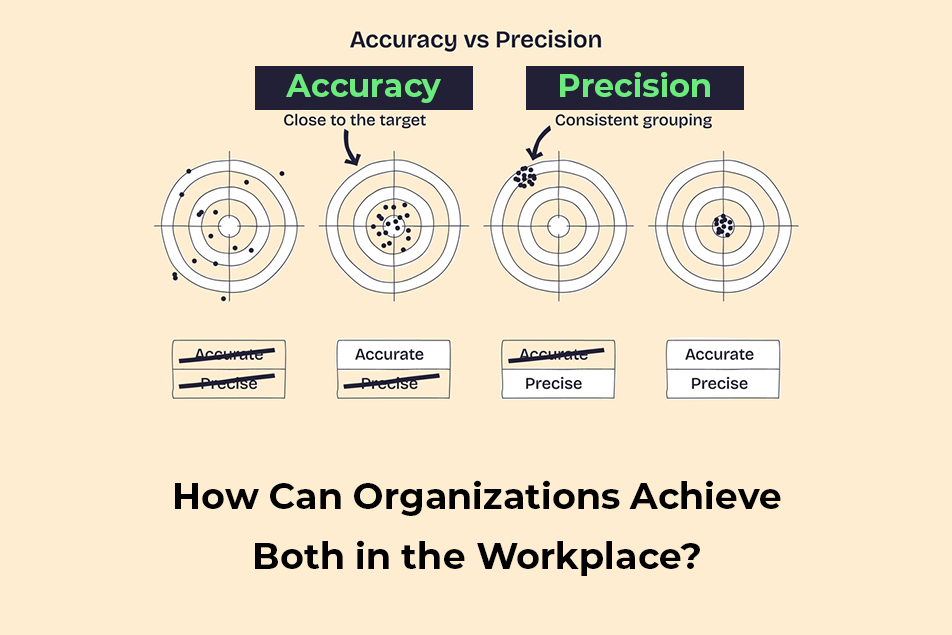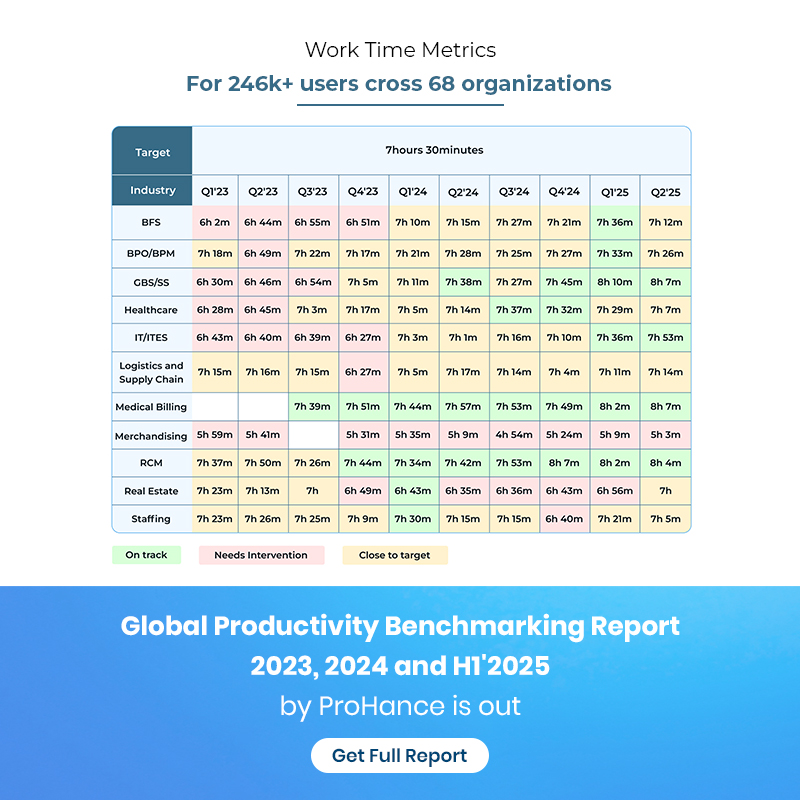Accuracy vs. Precision: How Can Organizations Achieve Both in the Workplace?
Table of Contents
- What is Accuracy?
- What is Precision?
- So, What’s the Difference Between Accuracy and Precision?
- Accuracy vs. Precision: The Bullseye Example
- Accuracy vs Precision: Which is More Important?
- Accuracy vs Precision: Measure and Improve Both
- Four Strategies for Improving Accuracy
- Four Strategies for Improving Precision
- Conclusion: Accuracy vs. Precision? Which one matters the most?
Business success is defined as the achievement of company goals and objectives, including profitability, growth, innovation, customer loyalty, etc. While the definition of success might vary from company to company, it requires commitment, hard work, and dedication to get as close as possible to the desired results.
But how do you measure results?
Accuracy and precision can be defined as forms of measurement that demonstrate how close you are to your target. While accuracy is a measure of how close the final result is to the target, precision indicates how close the two values are to each other. While both methods are often used interchangeably in normal life, in terms of measurement in business, they are quite different. An accurate measurement is not always precise, and vice versa.
In this article, we will highlight the difference between accuracy and precision and explain how and when you should use each.
What is Accuracy?
Accuracy is a measure of understanding how close the final result is to the actual targeted value. High accuracy is determined by how close you are to your target value. Conversely, a low accuracy count is when you’re way off the mark. Just one measure is enough to determine accuracy. However, repeatability is crucial to understand whether the same results can be maintained on a long-term basis.
We’ll demonstrate this with an example. Let’s say you’ve decided to increase your customer base across your retail chain by 15% by the end of the fiscal year. If you hit your set value – exactly 15% – then you’ve achieved 100% accuracy.
What is Precision?
Precision is the study of determining how close your results are to one another. Unlike accuracy, which is measured just once, precision is measured repeatedly to determine its value. If your measured values are similar, it can be said that you’ve achieved high precision. Disparate results indicate low precision. Measuring precision is beneficial in two scenarios:
- To avoid repeating mistakes
- To establish a process for reproducing similar success from before
Let’s continue with the above example. If all your outlets registered a similar increase in customers, say by 9%, you can say the results are highly precise but not accurate.
So, What’s the Difference Between Accuracy and Precision?
Despite both being forms of measurement, accuracy and precision are not the same. We’ll highlight the main accuracy and precision difference with the example of a bullseye.
Accuracy vs. Precision: The Bullseye Example
Imagine you’re throwing darts at a bullseye. The goal is to hit the center of the board, accurately and precisely. So you need to hit the bullseye as often as possible. Accuracy is when your dart lands close to or on the bullseye, and precision is when your darts land close to each other.
If you’re accurate, it means you have hit the target, but not every time. And if you’re precise, then your darts are all landing close to the same spot, which is not necessarily the bullseye. But when you’re accurate AND precise, that means your darts are hitting the bullseye every time.
Accuracy vs Precision: Which is More Important?
If accuracy and precision are both forms of measurement, which one does a business need the most? The answer is: Both.
However, if you are low on funds or time, you might not be able to get both. In that case, it is better to aim for accuracy. But remember, precision is also important for long-term success.
Accuracy vs Precision: Measure and Improve Both
By understanding the difference between accuracy and precision, leaders find it easier to make informed decisions and optimize business processes. Here are some techniques that companies use.
Four Strategies for Improving Accuracy
Applying these techniques to your business process can help close the gaps between your measurements and expected results:
- Data Cleaning and Validation
- Bias Reduction
- Calibration
- Error Analysis
1. Data Cleaning and Validation
Scrutinize and clean your data to achieve greater measurement accuracy. Take the help of financial analysts to validate revenue figures via multiple data sources.
2. Bias Reduction
It is easy for bias to creep in while conducting market research. This can help improve consumer insight and accuracy. Turn to diverse sampling techniques for a more accurate representation of your consumers.
3. Calibration
Calibrate sales forecasting models against the latest data regularly to improve future predictions, and align forecasts closer with actual outcomes.
4. Error Analysis
Conduct a systematic error analysis to arrive at the source of inaccuracies in financial models. Don’t forget to scrutinize assumptions and inputs.
Four Strategies for Improving Precision
Repeatedly improving performance can go a long way in achieving desired levels of precision. Implement these techniques to enhance precision in your processes:
- Standardized Operating Procedures
- Continuous Monitoring and Adjustment
- Track Key Performance Indicators (KPIs)
- Repeated Sampling in Quality Control
1. Standardized Operating Procedures
Establish standardized operating procedures to achieve consistency across all your business processes. The manufacturing sector, with its repeatable processes, can benefit from this practice.
2. Continuous Monitoring and Adjustment
Implement a method of continuous monitoring and adjustment of business processes. Set up a system that can track variability in production quality over a period.
3. Track Key Performance Indicators (KPIs)
Keep a close eye on KPIs to catch performance shifts as they occur. Get close and calculate sales velocity, customer acquisition cost, and lifetime value up to two decimal places. This can help capture changing trends in customer behavior and market dynamics.
Do the same for employee productivity metrics. Focus on quality and collaboration scores to get an accurate view of organizational health, while highlighting areas for improvement.
4. Repeated Sampling in Quality Control
Finally, conduct repeated sampling in quality control processes in short bursts to assess and improve consistency.
Conclusion: Accuracy vs. Precision? Which one matters the most?
As a business, you do need both. However, focus on accuracy at the start and work on developing the skills for precision. Before you know it, you’ll find yourself hitting your targets over and over again, taking your work and your business to greater heights.






